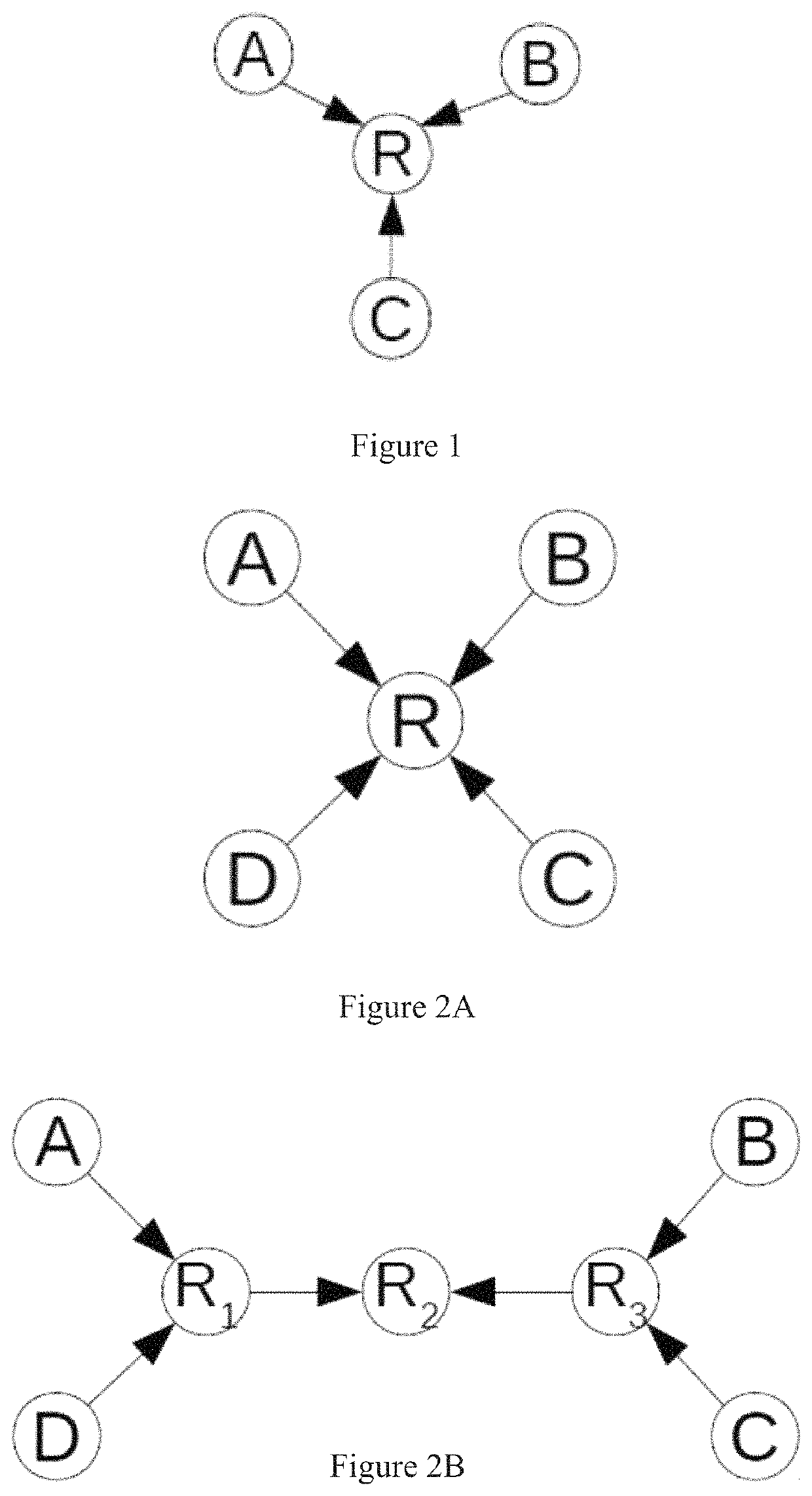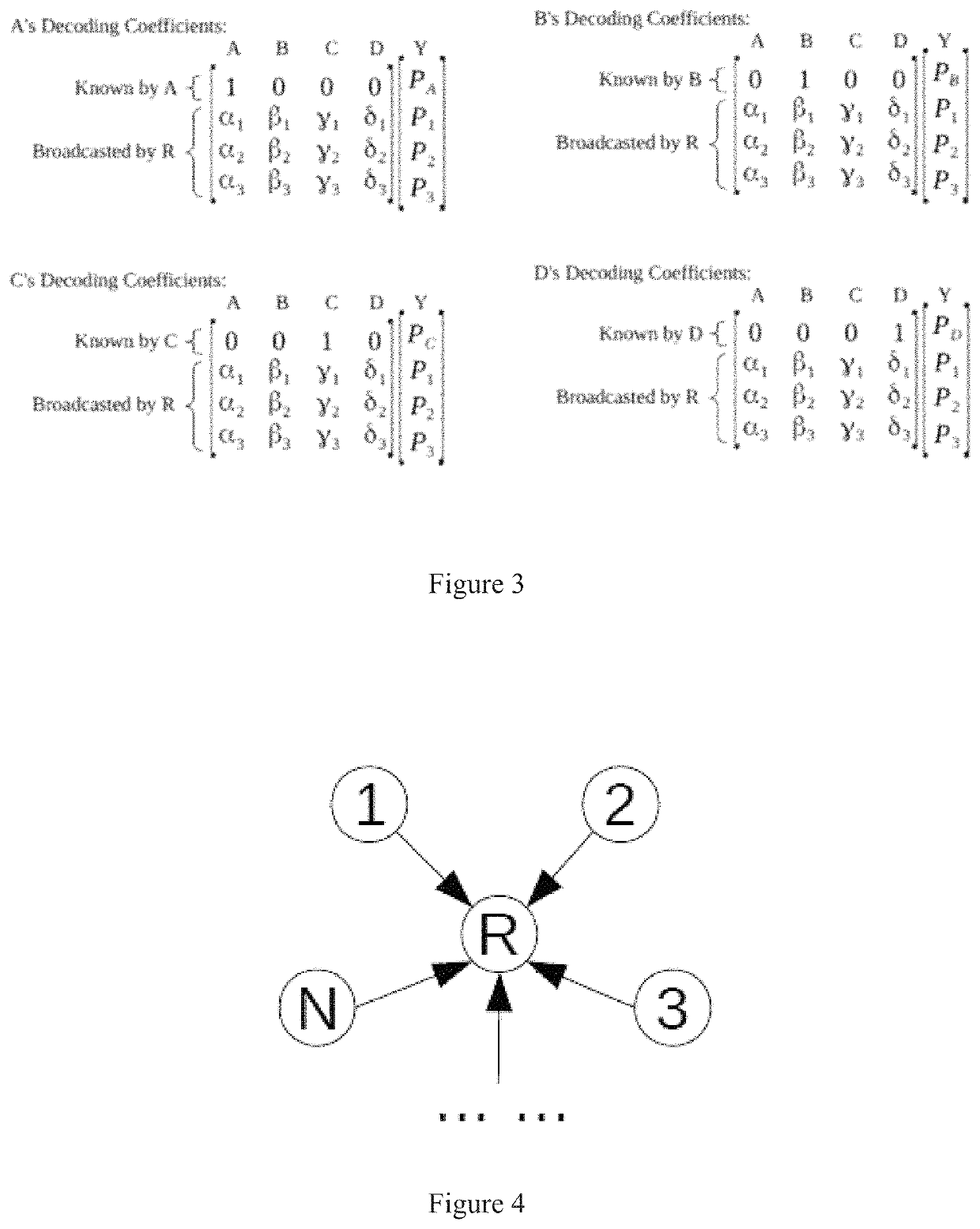Joint fountain code and network coding for multiple-source-multiple-destination wireless communication
a wireless communication and fountain code technology, applied in wireless communication, data switching networks, digital transmission, etc., can solve the problems of not being suitable for multiple-input and multiple-output (mimo) applications, not being able to complete the transition to wireless mesh networks, and not being able to meet the requirements of acknowledgment (ack) and retransmissions, so as to improve the efficiency of all-to-all transmission scenarios, reduce the number of transmissions, and improve reliability
- Summary
- Abstract
- Description
- Claims
- Application Information
AI Technical Summary
Benefits of technology
Problems solved by technology
Method used
Image
Examples
embodiment 1
[0042]A method of data transmission in wireless networks (or a network protocol, or wireless mesh protocol), the method comprising:
[0043]sending packets from one or more terminal nodes to one or more relay nodes;
[0044]recoding the packets in the one or more relay nodes; and
[0045]transmitting the recoded packets from the one or more relay nodes to the one or more terminal nodes.
embodiment 2
[0046]The method of Embodiment 1, wherein one or more of the relay nodes linearly recombines the received packets (e.g., P1=α1PA+β1PB+γ1PC and P2=α2PA+β2PB+γ2PC).
embodiment 3
[0047]The method of any of Embodiments 1-2, wherein one or more of the terminal nodes recovers packets by solving linear equations (e.g., by using their original packets).
PUM
 Login to View More
Login to View More Abstract
Description
Claims
Application Information
 Login to View More
Login to View More - R&D
- Intellectual Property
- Life Sciences
- Materials
- Tech Scout
- Unparalleled Data Quality
- Higher Quality Content
- 60% Fewer Hallucinations
Browse by: Latest US Patents, China's latest patents, Technical Efficacy Thesaurus, Application Domain, Technology Topic, Popular Technical Reports.
© 2025 PatSnap. All rights reserved.Legal|Privacy policy|Modern Slavery Act Transparency Statement|Sitemap|About US| Contact US: help@patsnap.com



